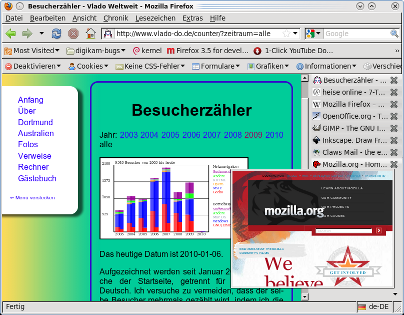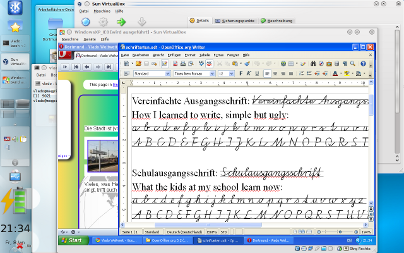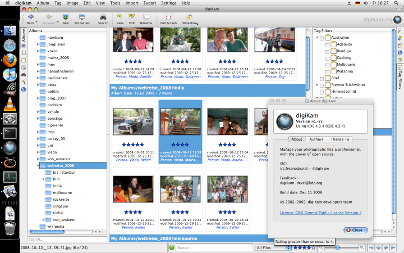Free Software
For more than 10 years I've now preferably been using Free Software. Back in 1999 I thought most people would be doing the same by now - what an error! But why is this?
- Many people don't know any free programs, or how good they are.
- Many people don't consider how expensive non-free software can be in the long run, even though they got it (often just ostensibly or illegaly) for free.
- Many are afraid of trying something new, for fear of wasting their time on it.
While I did the radical step of mainly using Linux, i.e. a collection of Free Software (instead of Windows) as my operating system, I here want to advertise some individual programs. These can be installed with very little effort, just a few clicks in most cases, also on Windows or on Mac OS. This leaves it open to users of those systems to still continue using other programs they might be familiar with, until they one day maybe realise they do not need anything but free programs anymore. Then shifting to a free operating system would just be a small step, which could once again be a great improvement to the user experience because of the better integration of the free programs.

Mozilla Firefox probably is the most popular free program. Although more than 90% of personal computers are running Microsoft Windows, which comes with its own web browser, more than 25% of internet users world-wide also installed Firefox on their computer - simply because it offers many advantages. Some of these are visible in the picture to the left: multitudinous add-ons (in my picture there's Web Developer, Tab Kit, Quick Locale Switcher, FlashBlock, and 1-Click YouTube Download), better support for standards (SVG support, round corners, shadows... all this is not yet possible with Windows Internet Explorer in 2010).
Firefox on the WWW: Official Homepage, Wikipedia Article

OpenOffice (formerly StarOffice) was, just like Mozilla (Firefox), originally a commercial programme, standing in comptetion to a certain product from Redmond. Because of that company's near-monopoly and then secret file-format StarOffice could not be sold any more and was given to the public as free open source software. It really is possible to do pretty much everything with it that's possible to do with the competition; some features are not as good, some are better... but it is possible, and the program will always remain free.
OpenOffice on the WWW: Official Homepage, Wikipedia Article

digiKam is my software discovery of 2009! I don't know any better program for managing digital pictures. DigiKam, unlike the aforementioned programs, is open source from the start and was, when I got to know it, not available for Windows and Mac OS (without X Window System) yet. Only in the last few years possibilities, and maybe also the willingness, to produce free software for the commercial operating systems as well increased. The digiKam handbook with advice for Digital Asset Management is excellent too.
digiKam on the WWW: Official homepage, Wikipedia Article